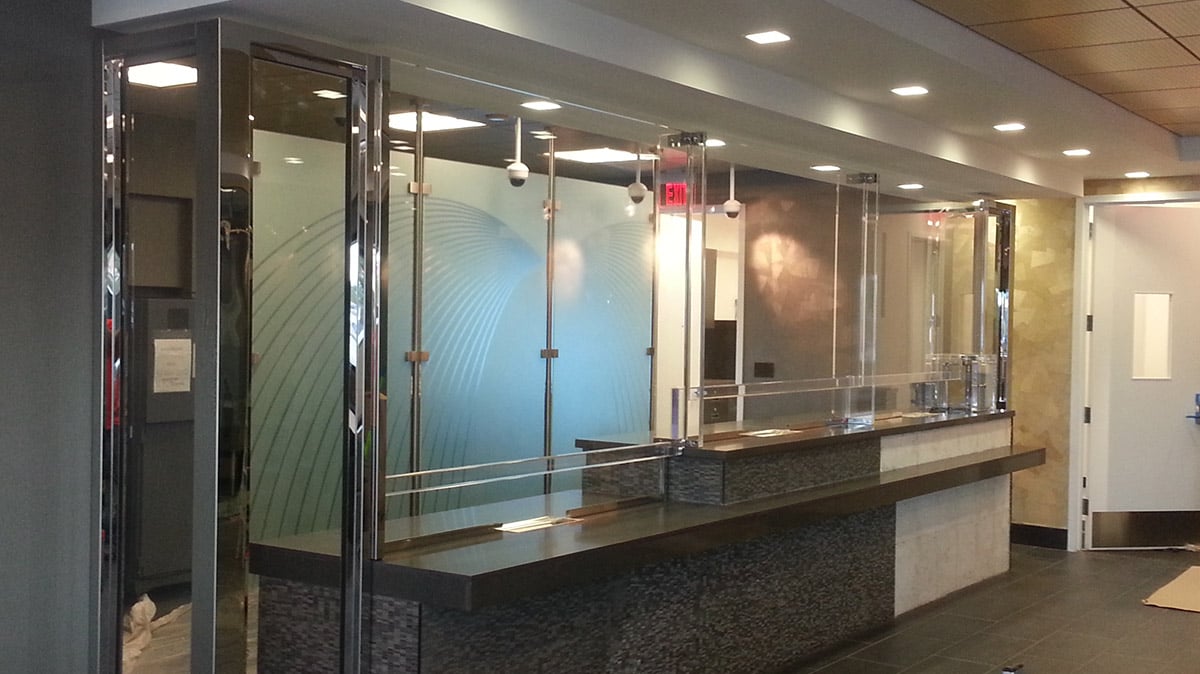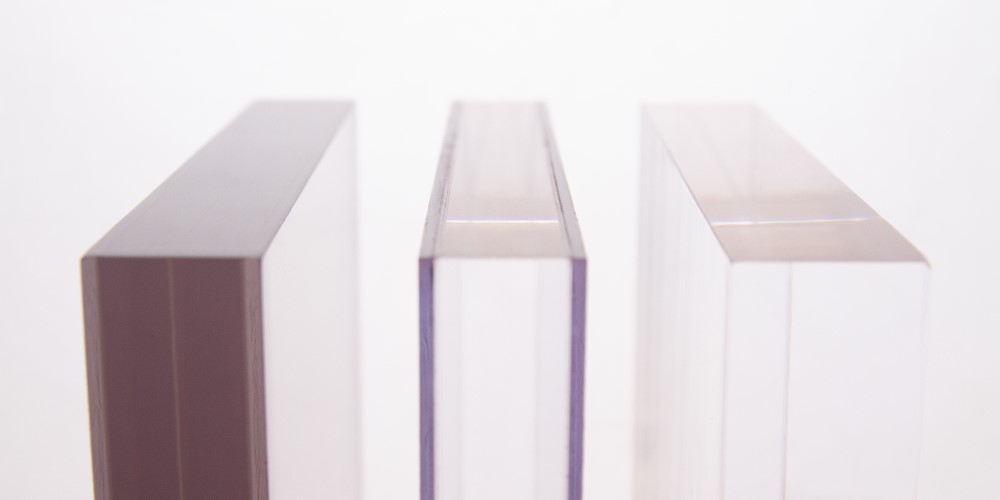Many customers don't have a very good idea of what "coated" vs. "uncoated" ballistic glazing is—although many ask about it, either because they've heard the term or seen it mentioned in a specification. In general, when we're talking about "coated" ballistic glazing, we're referring to an abrasion-resistant coating applied to the surface of the glazing.
The key issue is that acrylic and polycarbonate, while extremely strong materials, are not hard materials. Glass has a Mohs hardness of 5 or 6, the same as steel. This makes it extremely durable. But acrylic and polycarbonate are usually in the 3 to 4 range on the Mohs scale. A penny, by comparison, is a 3.5.
According to TSS engineers, that creates challenges. People are used to glass windows, which are inherently scratch resistant. The zipper on someone's jacket would never scratch a glass window. But it can scratch polycarbonate or acrylic.
Coated vs. Uncoated Ballistic Glazing
Because polycarbonate ballistic windows are made from laminated layers of different transparencies and other materials, it's easier for manufacturers to work around polycarbonate’s limitations. They regularly include a more durable outermost layer (often tempered glass) or abrasion-resistant coating as standard. This protects these ballistic windows from scuffs and scratches.
But most ballistic acrylic is a single monolithic slab of acrylic. So manufacturers offer an optional abrasion-resistant coating for customers who would like an extra layer of protection against weather, ultraviolet light, and cleaning solvents and practices that can damage acrylic.
According to TSS engineers, the coating is not anti-scratch. This coating is abrasion resistant. So it allows for a little bit more wear and tear and holds up better long term. A janitor knocking against the window with a vacuum cleaner, somebody accidentally hitting it with their tape measure or the zipper of their jacket, isn't going to indelibly mark coated acrylic or polycarbonate.
It's true that you can buff scuffs and scratches out of the surface of uncoated acrylic, but we often find that a decreasing portion of facilities have staff with the expertise and equipment to do so. Roughly 30% of the acrylic TSS installs now include an abrasion-resistant coating. That's why our team always asks the end-user about how high-traffic the area is, to gauge what the likelihood is of their acrylic needing the coating.
TSS's abrasion-resistant coating has no meaningful impact on the glazing's light transmission, clarity, or other qualities. For customers who are looking for privacy or other features from their windows, TSS offers other options for enhanced glazing performance.
Upgrading Ballistic Glazing, Coatings, and Treatments

For interior acrylic windows that require greater privacy, TSS offers a proprietary custom frosted finish that's attractive and extremely durable. For exterior windows, laminated polycarbonate offers customers many options. These include tints, mirroring, or low-E coatings. (Most of these aren't "coatings" per se, although customers sometimes refer to them as such. They are different interlayers added to the glazing makeup during manufacturing.)
TSS is an especially good partner for projects where energy efficiency, LEED certification, or demonstrating good environmental stewardship are key concerns.
So, it's fair to say we excel and are an industry leader in ballistic insulated glazing. This is because, in contrast to other bulletproofing companies, TSS is able to take a holistic approach that encompasses both security and energy efficiency.
As one of our engineers explains, “A lot of exterior systems need insulated glass, because that’s where you get your environmental factors for your building code or LEED certification." In Texas, you want to be sure heat isn't infiltrating, while in Michigan you're often concerned about making sure cold isn't leaching in. Meanwhile, in areas like North Dakota, you spend half the year fighting punishing heat, and the other half trying to keep out the brutal cold.
“Aluminum—which is what is used for ballistic frames—is a really great conductor of heat. If something is really hot on one side and really cold on the other, it is going to try to balance out. That’s just what it does. TSS can offer a frame that has a 'thermal break.' This stops that window frame from acting as a thermal bridge. That combination of insulated ballistic glass and thermal break frames is huge for anyone who needs a building that is secure, efficient, and comfortable.”
Navigating Customer Needs with Coated vs. Uncoated Ballistic Glazing
There are many uncoated and coated ballistic glazing options. This makes it possible to meet nearly any expectation, but can be challenging to navigate on your own. You can always contact our ballistic security experts if you have general questions or need guidance with a specific project.

